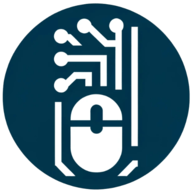7 Success Stories of Integrating Multiple Software Products
Discover the transformative power of software integration through real-world success stories, where experts unveil the strategies that led to breakthroughs in efficiency and innovation. These narratives provide a roadmap for navigating the complexities of integrating multiple systems, from proactive infrastructure management to streamlined e-commerce solutions. Dive into the collective wisdom of industry leaders and unlock the potential of seamless software ecosystems.
- Integrate ML Signals for Proactive Infrastructure Management
- Link Mind Maps with Google Drive
- Streamline E-commerce Order Fulfillment
- Unify Payment Systems for Financial Efficiency
- Enhance Camp Registration with Integrated Software
- Automate Clinic Tasks to Improve Patient Care
- Implement Automated Reporting for Enhanced Productivity
Integrate ML Signals for Proactive Infrastructure Management
In a recent project, I led a cross-functional effort to improve the failure prediction and remediation workflow for our compute infrastructure. The challenge was that we had siloed tools:
One system (used by telemetry teams) was generating predictive ML signals about potential node failures.
A second system (used by operations and deployment teams) was responsible for node repair, mitigation, and tracking, but had no visibility into those signals.
A third system handled customer impact notifications, which was completely decoupled from both.
This fragmentation resulted in delayed mitigation, lack of visibility for deployment teams, and reactive incident handling that negatively impacted customer experience.
To solve this, I spearheaded an integration effort between the three systems:
We used Azure Event Grid and Logic Apps to set up real-time communication between the ML prediction service and the deployment system (our internal version of a remediation engine).
I worked with the telemetry and ops teams to define a standardized schema for signal types, risk levels, and time-to-failure estimates.
Then we integrated this with our customer incident notification pipeline (built on Azure DevOps + Cosmos DB) so that customers would be proactively informed if their workloads could be impacted.
The integration enabled:
Automatic trigger of node mitigations within minutes of a prediction, instead of waiting for manual handoff.
Dashboard-level visibility across teams, allowing real-time tracking of node health, repair progress, and customer communication.
A new alerting workflow that reduced time-to-mitigation by over 40%, and improved customer trust through transparency.
Results:
Reduced high-severity hardware-related incidents by ~35% in the targeted fleet.
Standardized risk response workflows across teams and product lines.
The architecture became a reusable blueprint adopted by other Azure teams working on platform reliability.

Link Mind Maps with Google Drive
I successfully integrated Mindomo with Google Drive to streamline collaboration and document management for a team project. By linking Mindomo mind maps with shared documents in Google Drive, our team could visually organize ideas while keeping all related files easily accessible. This integration improved workflow efficiency, reduced time spent searching for resources, and made brainstorming sessions more productive.

Streamline E-commerce Order Fulfillment
I recall a project where we aimed to streamline order fulfillment for a client dealing with high-volume e-commerce. They grappled with fragmented data across their online storefront and shipping logistics. Here's what you need to know: we needed to bridge the gap between their e-commerce platform and their shipping software. We integrated the two systems using a custom API, allowing for real-time data exchange. This eliminated the need for manual data entry and reduced the risk of errors.
The results were impressive. You'd see a significant decrease in order processing time, cutting it down by nearly half. What's more, shipping accuracy improved dramatically, reducing customer complaints and chargebacks. The client also gained real-time visibility into their inventory and shipping status, enabling them to make more informed decisions. It wasn't just about connecting two systems, but about creating a unified workflow that boosted efficiency and customer satisfaction.

Unify Payment Systems for Financial Efficiency
We were using multiple payment systems across different departments, which resulted in frequent inconsistencies, data duplication, and complex reconciliation issues that slowed down financial reporting. I spearheaded the migration to a unified payment platform to streamline the entire process. One of the most significant challenges was the data migration itself, ensuring that all historical payment data was transferred accurately without disrupting daily operations. Integrating the new platform with our existing accounting software was another complex task that required careful mapping and rigorous testing. I coordinated closely with vendors, the IT team, and finance departments to establish a clear migration plan, including contingency measures for any data discrepancies. To ensure a smooth transition, we ran the new and old systems in parallel for a short period, monitoring for errors and inconsistencies. Post-implementation, payment processing became faster and more reliable, reconciliation issues dropped significantly, and the finance team reported a 38% reduction in time spent on manual corrections. Customers also benefited from a more seamless payment experience.

Enhance Camp Registration with Integrated Software
Camp Network, in conjunction with Stripe's payment processing capabilities, significantly enhances the camp registration experience for both camp organizers and their customers. Camp Network's software facilitates the creation and management of online registration forms, eliminating the need for traditional paper-based methods and offering parents the convenience of registering their children from any device. Coupled with Stripe's secure payment gateway, parents can easily pay camp fees using various online methods, ensuring their financial information is protected. This integrated system automates data collection, minimizing errors and streamlining administrative tasks, while also enabling automated communication for confirmations, reminders, and updates. Ultimately, the partnership reduces administrative overhead for camp organizers and provides a seamless, secure, and convenient registration process for parents.
Automate Clinic Tasks to Improve Patient Care
We faced significant delays in repetitive administrative tasks at the clinic, particularly in areas like patient intake, appointment scheduling, and insurance verification, which were affecting both staff efficiency and patient experience. To address this, I led the implementation of a workflow automation platform designed to streamline these manual processes. One of the primary challenges was mapping out the existing workflows and identifying which tasks could be automated without compromising patient care. I collaborated closely with clinical and administrative staff to ensure the automation aligned with the clinic's specific needs. During the initial rollout, we encountered technical issues, such as integration problems with our electronic health record (EHR) system and occasional errors in automated scheduling. I worked alongside the IT team to resolve these glitches and fine-tune the system. Once optimized, the platform significantly reduced patient intake times, improved appointment scheduling accuracy, and sped up insurance verification. This allowed staff to dedicate more time to direct patient care and support, ultimately enhancing both operational efficiency and the overall patient experience.
Implement Automated Reporting for Enhanced Productivity
Our team was spending an excessive amount of time manually generating reports, which not only slowed down workflows but also increased the risk of human error. To address this, I introduced an automated reporting tool designed to streamline the entire reporting process. One of the biggest challenges was customizing the tool to pull accurate data from multiple systems that weren't initially designed to integrate seamlessly. This required close collaboration with IT specialists and data analysts to set up robust integration protocols and validation checks to ensure data accuracy. Initially, the automated reports contained discrepancies due to mismatched data fields and formatting issues. However, through several rounds of iterative testing and fine-tuning, we refined the system to produce consistent and accurate reports. Once fully optimized, the tool reduced reporting time by over 43%, allowing team members to shift their focus from time-consuming data entry to more valuable tasks like in-depth data analysis and strategic decision-making, ultimately improving overall productivity.




